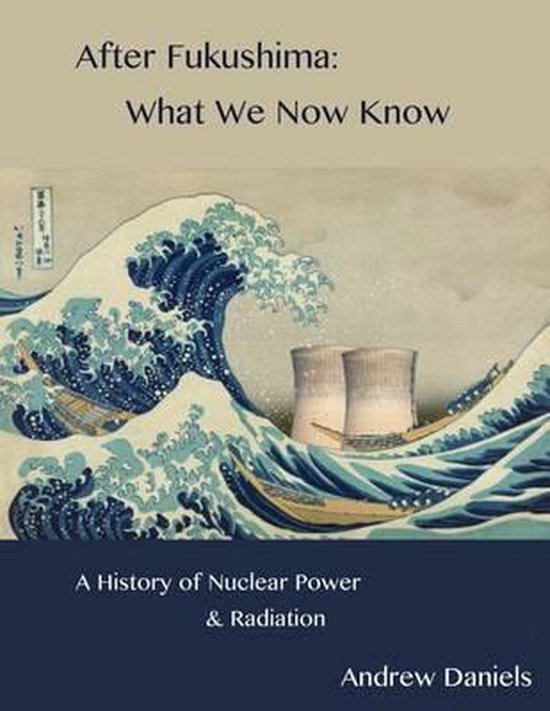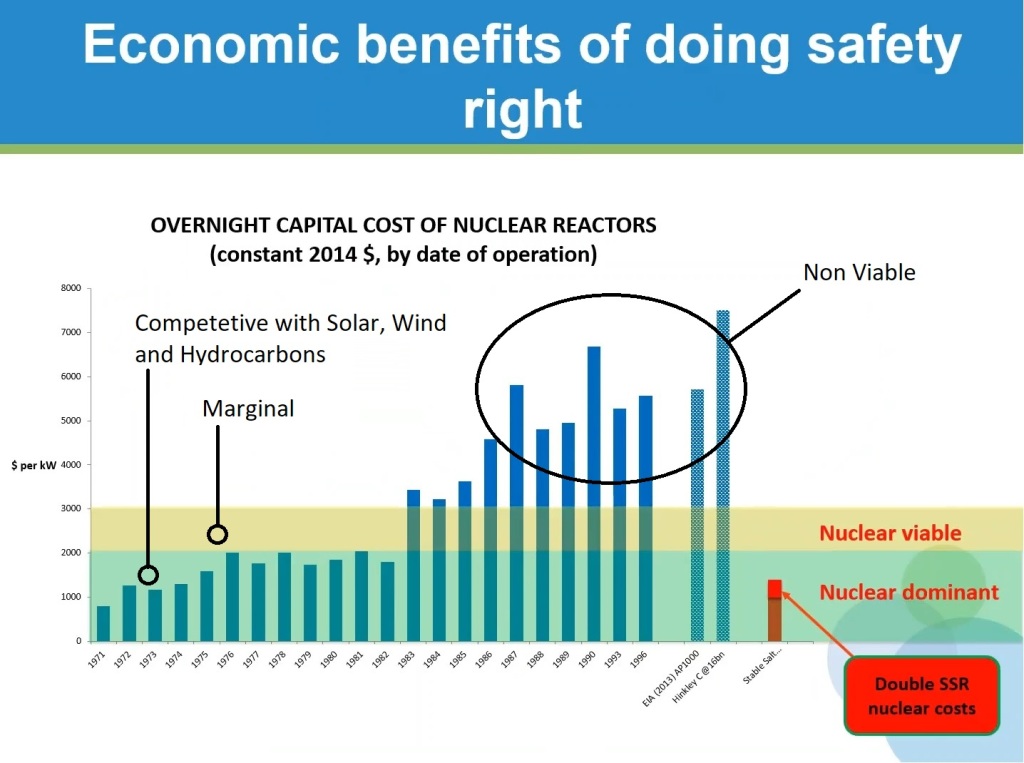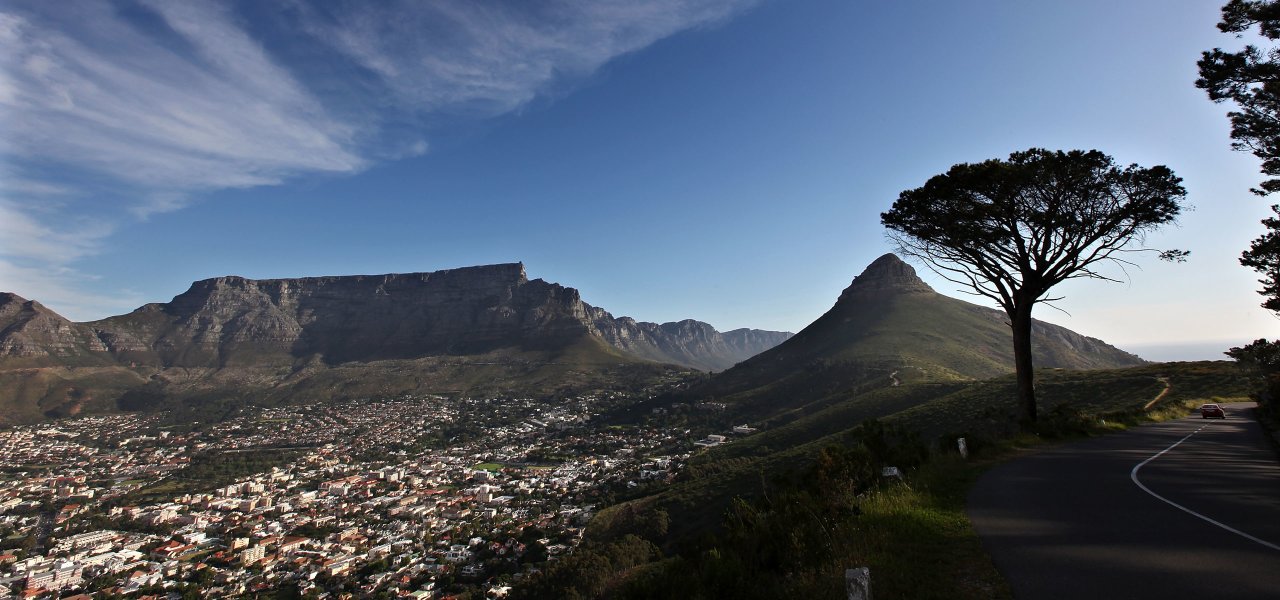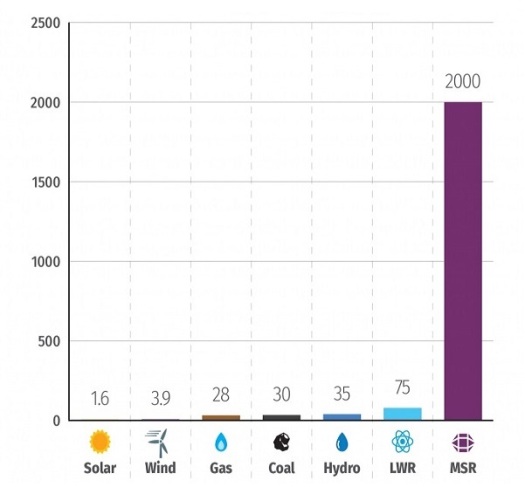
トリウムベースの溶融塩原子炉・液体燃料No.1 の責任:上海応用物理学研究所
Responsible for the Thorium-based Molten Salt Reactor-Liquid Fuel No. 1: The Shanghai Institute of Applied Physics
トリウム溶融塩原子炉
核燃料が溶融塩の形である原子炉は、多くの恩恵をもたらします。近い将来、中国で試験施設が稼働する予定です。
THORIUM MOLTEN SALT REACTORS Nuclear reactors in which the nuclear fuel is in the form of molten salt offer a wealth of advantages. A test plant will go into operation in China in the near future.
「パーフェクトテクノロジー」
原料は安価で世界中で入手可能であり、冷却水さえも必要ではなく、廃棄物は少なくなり、従来の核廃棄物よりもはるかに速く崩壊する
“Perfect technology”
The raw material is cheap and available worldwide, not even cooling water is needed and the waste is less and decays much faster than conventional nuclear waste: Thorium technology stands for a new quality of the use of nuclear energy
Wolfgang Kaufmann 23.01.2022
中国中部甘粛省の武威近くにある紅沙港工業団地では、パイロットプラントが間もなく稼働し、中国だけでなく世界中のエネルギー生産に革命を起こす可能性があります。 化石燃料の使用による二酸化炭素の排出、風力タービンの景観の劣化、環境に有害な生産による電池の大量使用、風や曇りのない天候での停電、リスクはありません。原子炉の事故による放射能の増加は、革新的なトリウムベースの溶融塩原子炉によって約束されています。 上海応用物理研究所のトリウムベースの溶融塩原子炉No.1(TMSR-LF1)は、原子力エネルギーの使用における新しい品質を表しており、それに「グリーンコート」を与えることになっています。
In the Hongshagang Industrial Park near Wuwei in the central Chinese province of Gansu, a pilot plant will go into operation in the near future, which has the potential to revolutionize energy production not only in the Middle Kingdom, but throughout the world. No more carbon dioxide emissions as a result of the use of fossil fuels, no more landscape degradation by wind turbines, no mass use of batteries from environmentally harmful production, no power outages in calm winds and clouds, but also no radiation risk due to reactor accidents, all this promises the innovative Thorium-based Molten Salt Reactor-Liquid Fuel No. 1 (TMSR-LF1) of the Shanghai Institute of Applied Physics, which advocates a new quality of use of the Nuclear energy is in place and this should give it a kind of “green coat of paint”.
TMSR-LF1トリウム液体塩原子炉の機能は比較的簡単です。 弱放射性元素のトリウムは液体の塩に溶解し、中性子を照射します。 これにより、核分裂時に大量の熱を放出する同位体ウラン233が生成されます。 したがって、原子炉は独自の燃料を生成します。最終的に、このプロセスは、従来の原子炉の運転よりもはるかに安全であり(以下を参照)、他にも多くの利点があります。
The operation of the Thorium Molten Salt reactor TMSR-LF1 is relatively simple. The weakly radioactive element Thorium is dissolved in molten salt and bombarded with neutrons. This produces the isotope uranium 233, the fission of which releases large amounts of heat. So the reactor produces its own fuel. This process ultimately brings much more safety than the operation of classic nuclear reactors (see below) and also a variety of other advantages.
6つの恩恵
Six Benefits
まず、必要なトリウム232はごく少量です。 イタリアのノーベル物理学賞を受賞したカルロ・ルビアが計算したところ、1トンのトリウムのエネルギー含有量は200トンのウラン金属または2800万トンの石炭のエネルギー含有量に相当するためです。
First, only extremely small amounts of Thorium 232 are needed. The energy content of one ton of Thorium corresponds to that of 200 tons of uranium metal or 28 million tons of coal, as the Italian Nobel Laureate in Physics Carlo Rubbia calculated.

第二に、世界中に主要なトリウム鉱床があります。 原則として、この元素は鉛と同様の頻度で岩石地殻に発生し、希土類の採掘における廃棄物としても発生します。 それが高価ではない理由です。 一方で、最近、従来の原子力発電所の数が再び大幅に増加しているため、ウランの不足や価格の高騰が見込まれます。
Secondly, there are larger Thorium deposits all over the world. In principle, the element occurs in the rock crust as often as lead and is also produced as a waste product in the extraction of rare earths. That’s why it’s not expensive. On the other hand, there is a risk of shortages and price explosions for uranium in the future, because the number of conventional nuclear power plants has recently increased significantly again.

第三に、トリウム溶融塩反応器は、例えば砂漠地域を含む事実上どこにでも建設することができる。冷却水を必要としないからです。
Thirdly, a Thorium Molten Salt reactor can be built virtually anywhere, including desert regions, for example. Because it does not require any cooling water.

第四に、そのオペレーション(原典はドイツ語であるので、この場合ビトリーブとなりうるか)はまた、大幅に少ない放射性廃棄物を生成します。また、TMSR-LF1からの核廃棄物の99%以上は、遅くとも300年後には無害な同位体に崩壊したと言われています。さらに、より高度な溶融塩反応器で後でより長い放射材料の少量の残留量を処理し、したがって完全に中和することができる。比較すると、ウランを動力源とする従来の原子炉は、使用される核燃料のほんの一部しか使用されていないにもかかわらず、数千年の半減期を持つ長寿命の放射性核分裂生成物を生成します。
Fourthly, its operation also generates significantly less radioactive waste. In addition, more than 99 percent of the nuclear waste from the TMSR-LF1 is said to have decayed into harmless isotopes after 300 years at the latest. Furthermore, it is possible to process the small residual amounts of longer radiating material later in more advanced molten salt reactors and thus completely neutralise. By way of comparison, conventional nuclear reactors powered by uranium produce long-lived radioactive fission products with half-lives of many thousands of years, even though only a small fraction of the nuclear fuel used is used.

第五に、トリウム溶融塩炉の建設と運転のコストは、通常使用される軽水炉のコストよりも低い。これは主に、システムの動作圧力が低いため、多くの安全上の注意が不要であること、および燃料棒を調達する必要がないという事実によるものです。
Fifthly, the costs for the construction and operation of Thorium Molten Salt reactors are lower than those of the light-water reactors that are usually used. This is mainly due to the low operating pressure of the systems, which makes numerous safety precautions superfluous, as well as the fact that no fuel rods have to be procured.

第六に、TMSR-LF1のような原子炉は、ウラン233がインキュベートされるだけでなく、核医学などで必要とされる他の多くの放射性核分裂生成物も生成されるため、非常に経済的に運転することができます。そして、放射性核種のいくつかは、ルビジウム、ジルコニウム、モリブデン、ルテニウム、パラジウム、ネオジム、サマリウムなどの非常に求められている元素にさえ変わります。同様に、希ガスキセノンが放出され、とりわけ絶縁媒体として、またレーザーおよび航空宇宙技術において使用される。
Sixthly, reactors such as the TMSR-LF1 can also be operated extremely economically because not only uranium 233 is incubated in them, but also many other radioactive fission products are produced, which are required, for example, in nuclear medicine. And some of the radionuclides even turn into highly sought-after elements such as rubidium, zirconium, molybdenum, ruthenium, palladium, neodymium and samarium. Likewise, the noble gas xenon is released, which is used, among other things, as an insulation medium as well as in laser and aerospace technology.
戦争は万物の父
War is the father of all things
TMSR-LF1の基礎となる技術は、中国ではなく米国で発明されました。早くも1954年には、空軍は長距離爆撃機に動力を供給するために小型の溶融塩原子炉を実験しました。しかし、このプロジェクトは、米国が大陸間弾道ミサイルを保有していたときに急速に終了しました。同様に、1970年代初頭、ユーリッヒ原子力研究施設の西ドイツの科学者は、溶融塩炉に関するいくつかの研究を発表しましたが、当時の原子炉開発責任者ルドルフ・シュルテンの消極的な態度のために最終的に注目されませんでした。
The technology underlying the TMSR-LF1 was not invented in China, but in the USA. As early as 1954, the Air Force experimented with a small molten salt reactor to power long-range bombers. However, the project came to a rapid end when the United States had intercontinental ballistic missiles. Likewise, at the beginning of the 1970s, West German scientists from the Jülich nuclear research facility presented some studies on molten salt reactors, which ultimately received no attention because of the negative attitude of the then head of reactor development, Rudolf Schulten [main developer of the pebble bed reactor design, a non fluid fuel system].
代替原子炉の受け入れの欠如のもう一つの理由は、世界中の原子力産業の関心の絶対的な欠如でした。古典的な原子炉では、優れたお金を稼ぐことができ、燃料棒の生産からの収入なしには誰もやりたがらなかった。したがって、腐食のリスクが高いとされるものや、誰かが原子炉を誤用して兵器級の核分裂性物質を製造するという仮説的な危険性など、溶融塩反応器の使用に反対するあらゆる種類のふりをした議論が持ち込まれた。
Another reason for the lack of acceptance of the alternative reactor type was the absolute lack of interest of the nuclear industry around the world. With the classic nuclear reactors, excellent money could be earned, and no one wanted to do without the income from the production of fuel rods. Therefore, all sorts of pretended arguments against the use of molten salt reactors were brought into play, such as the allegedly higher risk of corrosion and the hypothetical danger that someone will misuse the reactors to produce weapons-grade fissile material.
これは、中華人民共和国が2011年以来、TMSR-LF1の開発に4億ユーロ相当を投資することを妨げていない。結局のところ、北京の指導者たちは、2050年までに中国を「クライメートニュートラル」にするという野心的な目標を追求しており、溶融塩反応器の「完璧な技術」は絶対に不可欠であることを証明することができるだろう。
This has not prevented the People’s Republic of China from investing the equivalent of 400 million euros in the development of the TMSR-LF1 since 2011. After all, Beijing’s leaders are pursuing the ambitious goal of making the Middle Kingdom “climate neutral” by 2050, and the “perfect technology” of molten salt reactors could prove absolutely indispensable.

現在ゴビ砂漠の端でテストされている原子炉は、当初の公称出力はわずか2メガワットです。これは、約1000世帯にしか電力を供給できないことを意味します。しかし、TMSR-LF1の設計原理が成功すれば、出力373メガワットのトリウム溶融塩反応器の最初のプロトタイプが2030年頃までに稼働し、その後、中国全土で同じプラントが急速に連続して稼働します。ドイツが今なお原子力から遠ざかり続けるのか、それとも今も「グリーン原子力エネルギー」に頼っているのかは、まだ分からない。
The reactor, which is now to be tested on the edge of the Gobi Desert, initially has a nominal output of only two megawatts. This means that it can only supply around 1000 households with electricity. If the design principle of the TMSR-LF1 proves successful, however, the first prototype of a Thorium Molten Salt reactor with an output of 373 megawatts would go into operation by around 2030, which will then be followed by identical plants throughout China in rapid succession. It remains to be seen whether Germany will still remain in its abstinence from nuclear power at this time or whether it will now also rely on “green nuclear energy”.

Development of GH3535 Alloy for Thorium Molten Salt Reactor
PreußischeAllgemeineZeitung(PAZ)は、ドイツのメディア業界で唯一の声です。毎週、政治、文化、ビジネスの現在の出来事を報告し、私たちの社会の根本的な発展を支持しています。彼らの作品の中で、編集者は伝統的なプルーセンの価値観にコミットしていると感じています。古いプルーセンは、宗教的および思想的寛容、祖国への愛情と寛容さ、法の支配と知的誠実さ、そして特に社会のすべての分野での理由に基づく行動。このことを念頭に置いて、PAZはオープンな議論の文化を維持しています。これは、情熱的に独自の視点を表し、異なる考え方をする人々の意見を尊重し、発言権を与えます。日々の出来事を超えて、PAZは歴史的なプロイセンを思い出し、その文化遺産を大切にすることにコミットしていると感じています。これらの原則により、PreußischeAllgemeine Zeitungは、昨日、今日、明日、西と東の国と地域の間、そして私たちの国のさまざまな社会の流れの間のユニークなジャーナリズムの架け橋です。
The Preußische Allgemeine Zeitung (PAZ) is a unique voice in the German media landscape. Week after week, it reports on current events in politics, culture and business and takes a stand on the fundamental developments in our society. In their work, the editors feel committed to the traditional Prussian canon of values: The old Prussia stood and stands for religious and ideological tolerance, for love of homeland and open-mindedness, for the rule of law and intellectual honesty, and not least for reason-guided action in all areas of society . With this in mind, the PAZ maintains an open culture of debate, which passionately represents its own point of view and respects the opinions of those who think differently – and also lets them have their say. Beyond day-to-day events, the PAZ feels committed to remembering historical Prussia and caring for its cultural heritage. With these principles, the Preußische Allgemeine Zeitung is a unique journalistic bridge between yesterday, today and tomorrow, between the countries and regions in West and East – as well as between the different social currents in our country.
Translation courtesy of Duck Duck Go – Your personal data is nobody’s business.
Like the article? Give payments directly to PAZ here, Anerkennungszahlung
Support us to make more bilingual offerings like this via our Patreon.
Links and References
- Original article: https://paz.de/artikel/perfekte-technologie-a6180.html
- https://paz.de/impressum.html
- https://english.sinap.cas.cn/
- https://www.ans.org/news/article-3091/china-moves-closer-to-completion-of-worlds-first-thorium-reactor/
- https://en.wikipedia.org/wiki/Thorium
- https://de.wikipedia.org/wiki/Forschungszentrum_J%C3%BClich
- https://en.wikipedia.org/wiki/Rudolf_Schulten
- https://en.wikipedia.org/wiki/Pebble_bed_reactor
- https://en.wikipedia.org/wiki/Aircraft_Reactor_Experiment
- https://en.wikipedia.org/wiki/Aircraft_Nuclear_Propulsion
- https://www.nextbigfuture.com/2017/12/china-spending-us3-3-billion-on-molten-salt-nuclear-reactors-for-faster-aircraft-carriers-and-in-flying-drones.html
- https://regulatorwatch.com/reported_elsewhere/china-spending-us3-3-billion-on-molten-salt-nuclear-reactors-for-faster-aircraft-carriers-and-in-flying-drones/
- https://www.nuclearaustralia.org.au/wp-content/uploads/2021/04/Mark_Ho_20210512.pdf
- http://samofar.eu/wp-content/uploads/2019/07/2019-TMSR-SAMOFAR%E2%80%94%E2%80%94Yang-ZOU-PDF-version-1.pdf
- https://threeconsulting.com/mt-content/uploads/2021/04/chinatmsr2018.pdf
- https://www.gen-4.org/gif/upload/docs/application/pdf/2017-05/03_hongjie_xu_china.pdf
- https://msrworkshop.ornl.gov/wp-content/uploads/2018/04/MSR2016-day1-15-Hongjie-Xu-Update-on-SINAP-TMSR-Research.pdf
- https://www.researchgate.net/publication/324580866_Development_of_GH3535_Alloy_for_Thorium_Molten_Salt_Reactor
- Wuwei, Gansu, China
- https://tcw15.mit.edu/sites/default/files/documents/TMSRstatus-liuwei.pdf
- https://paz.de/anerkennungszahlung.html
- https://www.patreon.com/TheThoriumNetwork
- https://help.duckduckgo.com/results/translation/
#PreußischeAllgemeineZeitung #PAZ #ShanghaiInstituteofAppliedPhysics #SINAP #ThoriumMoltenSalt #MoltenSaltFissionEnergyTechnology #MSFET #Thorium #Japan
































You must be logged in to post a comment.